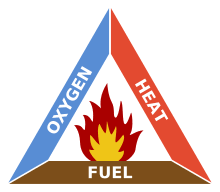
We take for granted the importance of fire to our very existence. It not only helps to heat our homes but is one of the main methods for us to cook our food and is also used in a variety of other ways. From thousands of years ago when early humans first tamed fire and began to use it to make their daily lives more comfortable. Open fires in homes are incredibly popular and the extra level of warmth and comfort that they bring to households. It is important to ensure that the fuel you are using for the fire is kept close by and Metal Log Holders are a great way to do this.

There are some incredible facts about fire and here are a few for you to enjoy:
Fire is not a thing that is found out in nature, it is a reaction that takes place requiring a fuel source, oxygen and heat to burn. The chemical reaction that takes place releases both light and heat and produces the flames that we see in a fire. We see a variety of colours in a flame including blues, oranges and yellows. Interestingly the blue part of the flame (found at the bottom of the flame nearest the fuel source) is the hottest. With a candle flame burning at around 1000 degrees Celsius. The fuel that can be used include oil, wood and coal.
The three elements that need to be in place for a fire to exist are the same things that can help to extinguish a blaze. So, there are in effectively three main ways to remove a fire:
- Smothering the fire (with a non-flammable item) to remove the oxygen
- Taking away the heat by dowsing the fire in water (this depends on the fuel source- do not add water to a fire caused by cooking oil)
- Taking away the fuel source – either by safely removing it from the fire or allowing it to burn out naturally.

When it comes to oxygen it is thought that more oxygen that is available to the fire the hotter the flames will become. This is why research has shown the Earth is the only place where fire can exist because the air in our atmosphere is around 21 percent oxygen. It is also the oxygen level that can affect the colour of the flames with the higher levels creating a blue colour and those with a lower oxygen level producing a yellow coloured flame.
